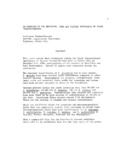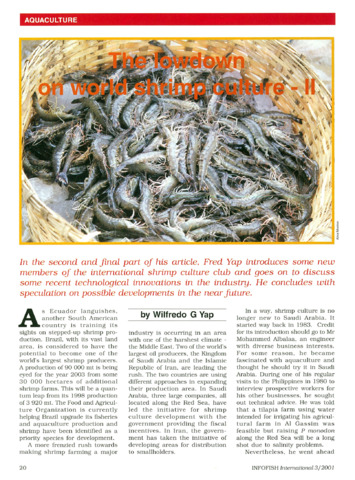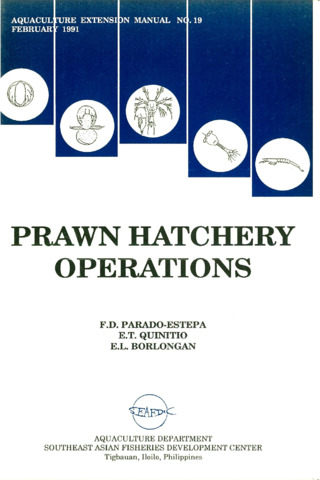| dc.contributor.author | Ruangpanit, Niwes | |
| dc.contributor.author | Maneewongsa, Sujin | |
| dc.contributor.author | Tattanon, Thanan | |
| dc.contributor.author | Kraisingdeja, Prakit | |
| dc.contributor.editor | Taki, Yasuhiko | |
| dc.contributor.editor | Primavera, Jurgenne H. | |
| dc.contributor.editor | Llobrera, Jose A. | |
| dc.date.accessioned | 2012-04-20T03:41:14Z | |
| dc.date.available | 2012-04-20T03:41:14Z | |
| dc.date.issued | 1985 | |
| dc.identifier.citation | Ruangpanit, N., Maneewongsa, S., Tattanon, T., & Kraisingdeja, P. (1985). Induced ovarian maturation and rematuration by eyestalk ablation of Penaeus monodon collected from Indian ocean (Phuket province) and Songkhla lake (Abstract only). In Taki Y., Primavera J.H. and Llobrera J.A. (Eds.). Proceedings of the First International Conference on the Culture of Penaeid Prawns/Shrimps, 4-7 December 1984, Iloilo City, Philippines (p. 166). Iloilo City, Philippines: Aquaculture Department, Southeast Asian Fisheries Development Center. | en |
| dc.identifier.isbn | 9718511008 | |
| dc.identifier.uri | http://hdl.handle.net/10862/930 | |
| dc.description | Abstract only. | en |
| dc.description.abstract | Because of the difficulty involved in maintaining a supply of sexually mature female shrimp for larval production in hatcheries, experiments on induced ovarian maturation in tiger shrimp, Penaeus monodon by eyestalk ablation were carried out from March to August, 1983. These shrimps were collected from two areas of Thailand: Phuket on the Indian Ocean and Songkhla Lake with entry to the Gulf of Thailand. Every female had one eyestalk pinched before being stocked together with males in various female-male ratios in 50-ton cement tanks with continuous water flow. The shrimp were fed 10% of their body weight daily with a diet of 90% green mussel (Mytilus edulis) and 10% cow liver.
Results show that of those female shrimps collected in the Phuket area which is a natural spawning ground, 51% became gravid.However, of those collected in Songkhla Lake which is not a spawning area, only 19.51% became gravid. There was also a large difference in the number of days between eyestalk ablation and first spawning: 4-5 days for the Phuket samples and 20-30 days for those from Songkhla Lake. The survival rate of the larvae until P20 averaged 8.5% (total 732, 259) for the Phuket samples and 4.0% (total 300,000) for the Songkhla Lake samples. Results show mass mortality during the nauplius and mysis stages of shrimp from both locations which may indicate a greater susceptibility to bacterial and fungal infections in larvae produced from artificially matured females.
Further studies should be undertaken to determine the proper nutritional diet for maximum production of gravid females, and to discover methods to increase sperm production in males from areas other than natural spawning grounds. | en |
| dc.language.iso | en | en |
| dc.publisher | Aquaculture Department, Southeast Asian Fisheries Development Center | en |
| dc.subject | Eyestalk extirpation | en |
| dc.subject | Induced breeding | en |
| dc.subject | Shrimp culture | en |
| dc.subject | Penaeus monodon | en |
| dc.subject | Thailand | en |
| dc.title | Induced ovarian maturation and rematuration by eyestalk ablation of Penaeus monodon collected from Indian ocean (Phuket province) and Songkhla lake | en |
| dc.type | Oral presentation | en |
| dc.citation.spage | 166 | |
| dc.citation.conferenceTitle | Proceedings of the First International Conference on the Culture of Penaeid Prawns/Shrimps, 4-7 December 1984, Iloilo City, Philippines | en |
| dc.subject.scientificName | Penaeus monodon | |



